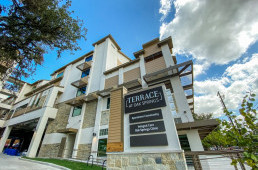
March 5, 2021 | by Michael Wilt
Categories: Homelessness, Rental Housing, Supportive Housing Services
The ongoing pandemic and events like last month's winter storms have sharpened the focus on models designed to rapidly get unsheltered individuals out of hazardous and life-threatening living situations and into stable housing. In Fort Worth, Council Members recently approved the use of coronavirus relief funds to acquire and convert a hotel into supportive housing for COVID-vulnerable homeless residents.
As more housing providers turn to Housing First principles as an intervention for individuals experiencing homelessness, questions arise about what Housing First is, how it’s implemented, and if it works.
The U.S. Department of Housing and Urban Development describes Housing First as "an approach to quickly and successfully connect individuals and families experiencing homelessness to permanent housing without preconditions and barriers to entry, such as sobriety, treatment or service participation requirements."
At its core, there are two primary components to Housing First programs. The first is that there are few if any barriers to housing. Generally speaking, there are relaxed requirements for tenant screening surrounding income, rental history, criminal history, or fulfilling programmatic prerequisites like maintaining sobriety or completion of a treatment program.
The National Alliance on Homelessness explains that this rationale is based on the belief “that people need basic necessities like food and a place to live before attending to anything less critical, such as getting a job, budgeting properly, or attending to substance use issues.”
The second principle is that once provided housing, residents are offered supportive services, but they are not required to participate in them as a condition of remaining housed. Instead, Housing First emphasizes harm reduction practices and motivational communication to address tenant issues like substance use.
Housing First isn't a housing product type like Permanent Supportive Housing (PSH), multifamily developments, or Single Room Occupancy (SRO) developments. Instead, it's a housing program that can be implemented within different housing product types.
It's most commonly used in PSH developments like the Terrace at Oak Springs in Austin as a way to house those who experience chronic homelessness or are at-risk of homelessness and have significant barriers to housing.
Advocates of the model point to evidence that supports two benefits of the program: increased housing stability and cost savings to a community. The latter is based on research done in Denver that documented an average emergency cost savings of $31,545 per Housing First program participant.
However, critics have argued that the benefits of Housing First are largely over-stated and separately that the model hasn't significantly reduced homelessness. They also contend that providing housing without requiring more from a resident deprives that person with the opportunity to reach her/his full potential.
For more information about the benefits and criticisms of the Housing First model, we recommend the following resources:
National Alliance to End Homelessness—Why Housing First
Texas Public Policy Foundation
On the House blog posts are meant to provide general information on various housing-related issues, research and programs. We are not liable for any errors or inaccuracies in the information provided by blog sources. Furthermore, this blog is not legal advice and should not be used as a substitute for legal advice from a licensed professional attorney.
TSAHC reviews all blog comments before they are posted to ensure a positive experience for our online community. Off-topic comments; hostile, derogatory or deliberately insulting comments; and comments specifically promoting goods and services will not be posted.
Approved comments will be published in their entirety. Personal information will not be removed unless it pertains to someone other than the person submitting the comment. For more information, please see our Comment Posting Guidelines.
To remove a previously submitted and published comment, please contact Anna Orendain at [email protected].
If you have a question regarding any of TSAHC's programs, please contact us.
